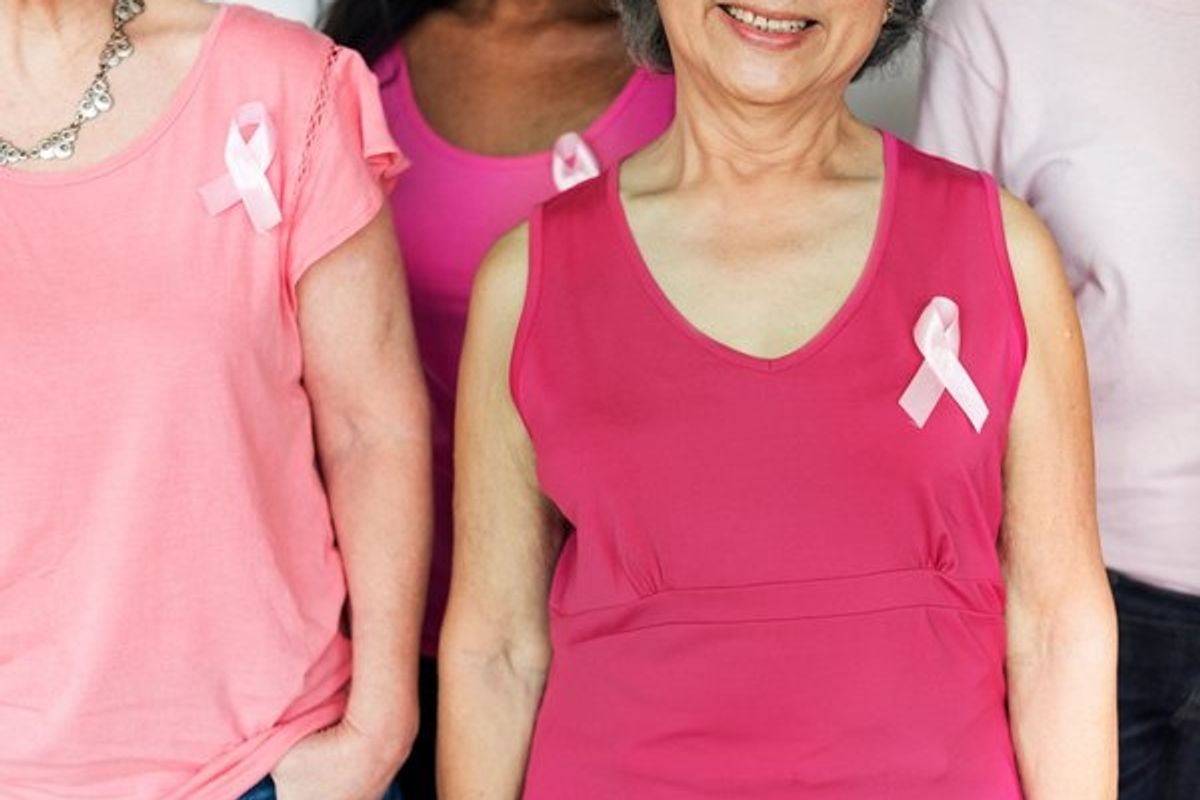
What Comes After Breast Cancer?
Breast cancer changes your life—body and mind. Here are ways to deal with some of the immediate physical ramifications of breast cancer treatment.
Dec 14, 2016
Sep 17, 2020
Your Body
Sheryl Kraft, a freelance writer and breast cancer survivor, was born in Long Beach, New York. She currently lives in Connecticut with her husband Alan and dog Chloe, where her nest is empty of her two sons Jonathan. Sheryl writes articles and essays on breast cancer and contributes to a variety of publications and websites where she writes on general health and wellness issues. She earned her MFA in writing from Sarah Lawrence College in 2005.
Full BioLearn about our editorial policies

Life events can be a series of the simple and straightforward.
A situation happens; we deal with it. And then, we move on.
Except when they're not simple and straightforward.
Consider breast cancer. Those two words are often fraught with a much more complicated and oftentimes knotty web to navigate.
What comes before breast cancer: A feeling of relative security; a going-about-my-life mentality without spending too much time thinking about the myriad health conditions, risks and diseases that are out there.
What comes during breast cancer: Anxiety, fear, shock, disbelief, sadness, strength, weakness, fight, surrender … a mixed bag of emotions, with a total emphasis on getting the best treatment, getting through the treatment and returning to "real life."
What comes after breast cancer: Wondering what "real life" truly is. Adjusting to a new normal after various surgeries and treatments—a changed and altered body and mind and a drive to move forward and work toward living with the best and healthiest mind, body and spirit possible.
For so many survivors, post-treatment is when the real battle begins. Our life is altered—and we are still trudging through unfamiliar territory, searching for a way to fit ourselves into its new shape and form. We may feel an ongoing sense of dread, fear a recurrence or suffer from survivor guilt.
These emotions take time to untangle and understand, and eventually cancer survivors settle back into life, albeit a different life—many times a better one, feeling stronger, more empowered and more aware than ever.
In the meantime, here are a few of the latest and most practical ways to begin to move on and deal with some of the immediate physical ramifications of breast cancer treatment:
Looking to Eliminate Your Radiation Tattoo? If you've undergone radiation therapy, you may have received a radiation tattoo that helps guide the therapist to accurately target the treatment area. Once your treatment ends, you may want to remove this tattoo, which can serve as an unpleasant reminder for some.
PicoSure is an FDA-cleared laser that uses a technology that effectively "shatters" the tattoo ink into tiny dust particles, which are naturally eliminated by your body with minimal discomfort.
Many physicians around the country are offering the treatment free of charge to breast cancer survivors during October, in honor of Breast Cancer Awareness Month.
Considering Breast Reconstruction? Although many women opt for breast reconstruction immediately after their surgery to rebuild the shape and appearance of their breast(s), some wait until later to decide about reconstruction—or ultimately choose not to have it at all. One helpful way to access information on breast reconstruction is at the website Natrelle.com, which offers a surgical guide, implant options, safety and other information.
Traditionally, most surgeries for breast cancer remove the nipple and the areola (the dark skin around it), although nipple-sparing mastectomies may be possible in some cases. Areolas and nipples can be re-created a few months after reconstruction surgery by using your own skin and/or a tattoo. Pink Perfect is another option, developed by a breast cancer survivor. The company manufactures realistic, custom-made and ready-made adhesive silicone nipples in a variety of color variations.
Is Vaginal Dryness a Side Effect of Your Treatment? Many times, chemotherapy can induce a sudden and early menopause (known as medical menopause), especially if you're close to the age where it would naturally occur (in younger women, it can be temporary). With its rapid onset, symptoms are more intense and uncomfortable than they would be had menopause been natural and more gradual. One of the most common complaints of menopause is vaginal dryness that comes with the drop of estrogen, which helps keep the vaginal lining healthy and elastic. The result: pain, itching and burning. Lubricants, moisturizers and vaginal estrogen therapy may be an option for many women.
Another option is MonaLisa Touch, an FDA-cleared laser therapy that delivers fractional carbon dioxide laser energy to the vaginal wall tissue, which helps generates new collagen and increased blood flow to the area, restoring gynecological health. Three five-minute treatments are recommended, and many patients find that their symptoms are relieved and improved within just a few days of the first treatment.
More Reading:
Please, Get Tested!
Some Hard-Won Lessons
Do This One Easy Thing to Reduce Your Breast Cancer Risk
Breast Cancer: The Good, the Bad, the Confusing
This post originally appeared on mysocalledmidlife.net.